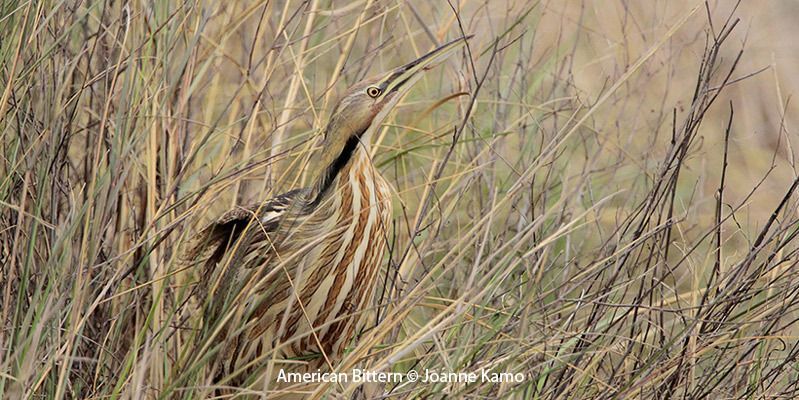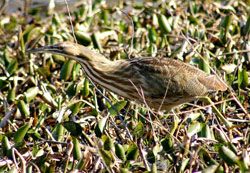
© Helen Baines
American Bittern
Botaurus lentiginosus
Family: (Ardeidae) Herons, Egrets, and Bitterns
Preferred Habitat: Fresh and saltwater marshes
Seasonal Occurrence: Common fall through spring. Less common in summer.
Notes: The American Bittern is a medium-sized thickset wading heron. They are primarily buff brown with distinctive white streaks on the underside and sides of the neck. Their intricate wing coloration makes them fairly camouflaged when trying to spot them alongside marsh vegetation. While in flight they can be easily identified by their contrasting dark outer wing tips. Unlike most herons, the American Bittern has shorter legs, a relatively thick neck and long bill. This extensive thick and sharp bill make them distinguishable from similar herons such as the night-herons.
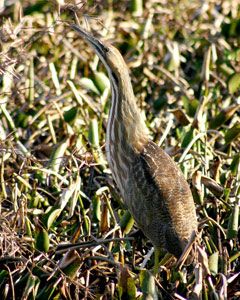
© Helen Baines
When feeling threatened the American Bitten typically freezes rather than flying off. At the same time they extend their neck and bill to match the upright, swaying of marsh grasses.
They breed in northern North American and Canadian marshes. Freshwater marshes are favored, but they can be found in brackish marshes and during migration they can even be seen in salt marshes. Although the Bittern is rarely seen, it is often located on the breeding grounds by its odd pumping or booming sound heard during the evening and into night. The sound produced by the American Bittern is heard during male courtship displays or when defending his nesting territory. During courtship the male makes this booming sound after he arches his back allowing white plumage to be visible while shortening his neck and pushing his breast out. Their sound will often carry long distances through the marsh. A beloved colloquial name for the American Bittern is the slough pump.
Profile by Charlie Ayers: The American Bittern is a master of disguise! American Bitterns tend to choose when they are seen rather than being found. With their cryptic, brown, streaky coloration, they materialize right in front of your face as they move methodically through the reeds, only to vanish into thin air once again when they decide to sit still.
American Bitterns are medium-sized herons that almost exclusively occupy freshwater wetlands. They hunt for a variety of prey, including insects, salamanders, small mammals, and snakes, but their main food source is fish. American Bitterns, like many other herons, are ambush predators. They use their ability to stand extra still to their advantage when hunting — they will stand tall with their necks stretched out as to look like a reed and wait, slowly moving their heads down, focusing their eyes on the water until they lock on and attack with voracious speed, spearing their fish dinner.
American Bitterns can be identified by their overall streaky brown plumage, long yellow bill, and a black stripe that runs down the side of their necks. In flight, look for dark flight feathers, pale coverts, and a hunchback appearance. Learning its call is another sure way to identify this species, as it’s a unique one. During the breeding season, male American Bitterns will use a mating call that can be described as a pump-er-lunk. It sounds like a drip of water hitting a pool. This has earned them some colorful nicknames such as “thunder pumper” and “water belcher.” It is truly one of the weirdest sounds in the bird world.
Unlike many of the herons here in east Texas, American Bitterns do not breed in the area; they only stay for the winter and then migrate as far as northern Canada to breed in the rich freshwater marshes. If you want to try your luck at catching a glimpse of one of these mystics of the marsh, check out places with ample reeds for them to hide in, such as Gast Bay Bird Sanctuary, Anahuac NWR on the Shoveler Pond Loop, and Bolivar Flats Bird Sanctuary.
-
Cornell Lab of Ornithology
-
Field Guide
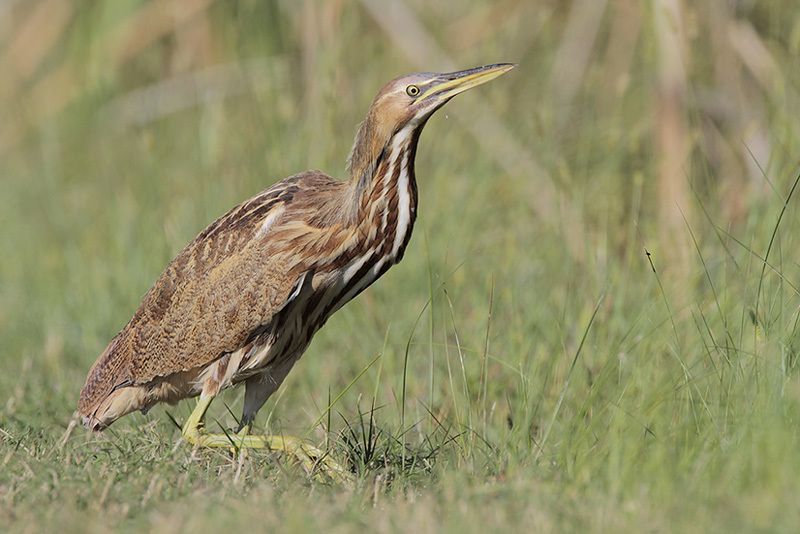
© Greg Lavaty, www.texastargetbirds.com
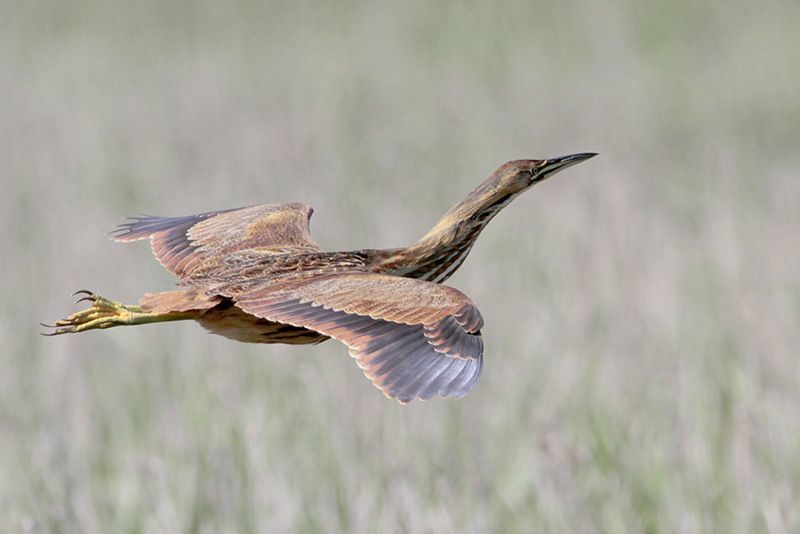
© Greg Lavaty, www.texastargetbirds.com
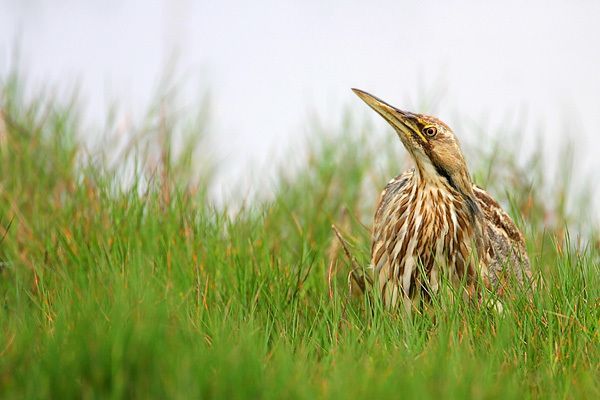
© Greg Lavaty, www.texastargetbirds.com
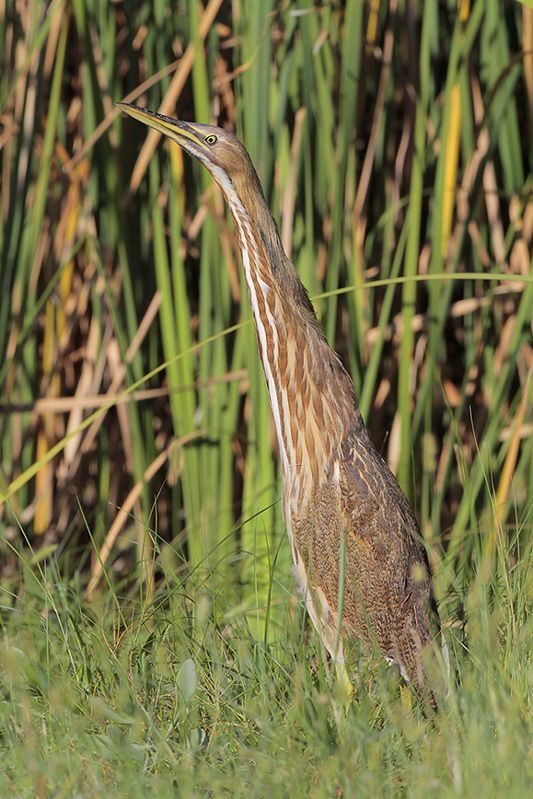
© Greg Lavaty, www.texastargetbirds.com
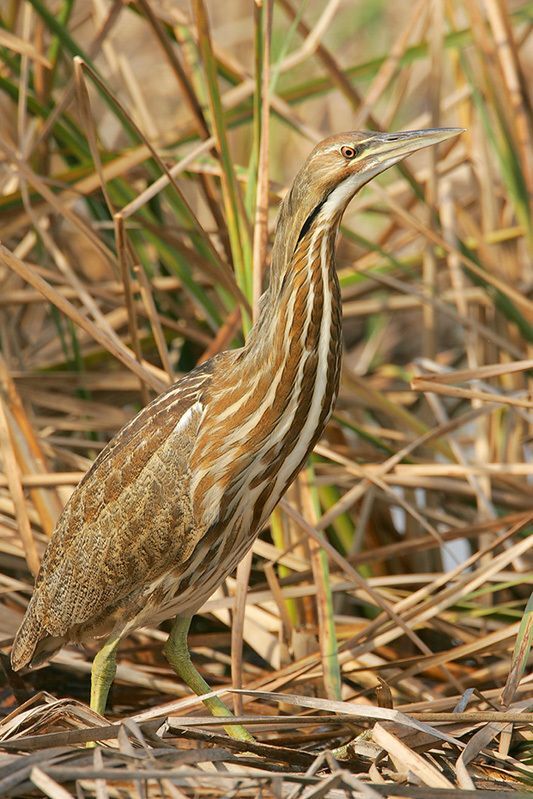
© Greg Lavaty, www.texastargetbirds.com
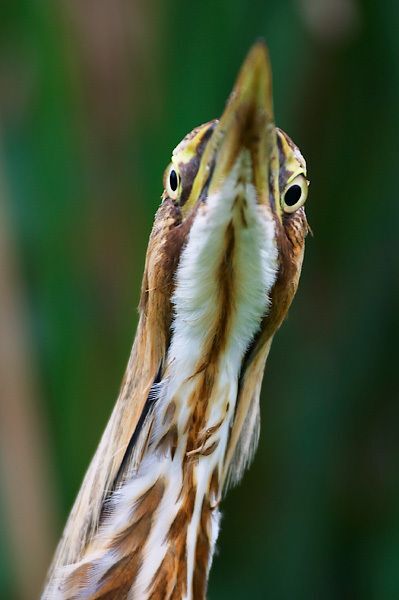
© Greg Lavaty, www.texastargetbirds.com

